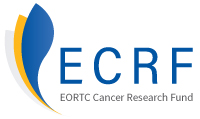MISSION
The Brain Tumour Group initiates and conducts research to challenge, re-define and develop standards of care in controversial areas of diagnostic and therapeutic neuro-oncology. The Group is especially focused on diffuse gliomas of adulthood of World Health Organisation grades II to IV and, in recent years, also meningioma.
PRACTICE CHANGING RESEARCH
Brain cancer accounts for approximately 3% of all cancer cases worldwide1. Generally, around 17 out of every 100 people with a cancerous brain tumour will survive for 5 years or more after being diagnosed2.
Brain tumours encompass many different cancer types. Primary brain tumours originate from the brain tissue itself, while secondary brain tumours are metastases spreading to the brain from cancers of other organs (e.g. lung cancer, breast cancer, melanoma).
Despite decades of research, brain tumours remain among the deadliest of all forms of cancer. The ability of these tumours to resist almost all conventional and novel treatments relates, in part, to the unique cell-intrinsic and microenvironmental properties of neural tissues3.
The EORTC Brain Tumour Group conducts research on several types of brain tumours of adults with the goal to improve treatments for and outcomes of glioblastoma patients. The current standard of care therapy for several glioma types was defined by clinical trials led by the Group, and involves neurosurgery, radiotherapy and chemotherapy. Current trial activities aim to test novel treatment approaches such as investigational agents and combined treatment modalities.
1 2. Ferlay J, Seorjomataram I, Ervik M, et al. GLOBOCAN 2012 v1.0, Cancer Incidence and Mortality Worldwide: IARC CancerBase No. 11 [Internet]. Lyon, France: International Agency for Research on Cancer; 2013. Available from: http://globocan.iarc.fr. Accessed May 30, 2016. [Google Scholar] [Ref list]
2 3. Ohgaki H. Epidemiology of brain tumors. Methods Mol Biol Clifton NJ. 2009;472:323–342. doi:10.1007/978-1-60327-492-0_14. [PubMed] [Google Scholar] [Ref list]
3 Aldape K, Brindle KM, Chesler L, Chopra R, Gajjar A, Gilbert MR, Gottardo N, Gutmann DH, Hargrave D, Holland EC, Jones DTW, Joyce JA, Kearns P, Kieran MW, Mellinghoff IK, Merchant M, Pfister SM, Pollard SM, Ramaswamy V, Rich JN, Robinson GW, Rowitch DH, Sampson JH, Taylor MD, Workman P, Gilbertson RJ. Challenges to curing primary brain tumours. Nat Rev Clin Oncol. 2019 Aug;16(8):509-520. doi: 10.1038/s41571-019-0177-5. PMID: 30733593; PMCID: PMC6650350.
LATEST PUBLICATIONS
Want to read in detail our scientific findings on specific tumour type?
Search through our comprehensive list of EORTC published articles to date.



